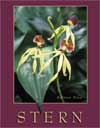 |  Introductory Plant Biology, 9/e Kingsley R. Stern,
California State University, Chico
New To This EditionIn addition to a complete update to all chapters, based on over 100 reviewers' comments, the following major changes can be found in this edition: - Chapter 3 (Cells) has been modified to include several rewritten sections, the incorporation of changes suggested by reviewers, more logical organization of topics, and many new photographs and illustrations.
A new feature for the ninth edition is an illustration of the cell that serves as a
“map” for the student. This art is first introduced as a large illustration of the cell
(Fig. 3. 4). In subsequent figures it is coupled with other images illustrating the
various components of the cell. For example, as the student is shown the cell
wall (Fig. 3.6), the plasma membrane (Fig. 3.7), the inner and outer membranes,
nuclear pores, chromatin, and nucleolus (Fig. 3.8), the endoplasmic reticulum and
ribosomes (Fig. 3.9), the dictyosome (Fig. 3.10), the chloroplasts (Fig. 3.11), and
the mitochrondrion (Fig. 3.13), on each of these pieces of art they can refer to the
smaller image of the entire cell and orientate themselves. This new feature has
also been applied to difficult concepts in Chapter 10.
- Chapter 10 (Plant Metabolism) revisions include new sections on energy transfer in the introduction and secondary metabolism, as well as several rewritten sections to simplify complex topics. Additional changes suggested by reviewers were made, a more consistent use of terminology was introduced, several new/revised figures were added, and a summary table for ATP production in cellular respiration has been included.
- Chapter 13 (Genetics) has been completely reorganized to present molecular genetics first. The chapter now has new sections on cytogenetics, extranuclear DNA and quantitative genetics, a completely revised section on gene expression, revised and expanded content on mutation, new material on Barbara McClintock's discovery of transposable elements, a new illustration on the linkage map of a pea, and a new Awareness Box on the Polymerase Chain Reaction.
- Chapter 14 (Plant Propagation and Biotechnology) has also been completely rewritten. This chapter includes a new section on crop plant evolution, including discussions of the origins of agriculture and steps in domestication; a new section on plant breeding, including breeding strategies, gene banks, protoplast fusion and transgenic plants; an updated discussion of the pros and cons of transgenic plants; over 20 new photos, and a new illustration on the origins of crop plants.
- A new feature, Learning Online, can now be found at the end of every chapter. This list of chapter-related topics mimics an identical list on the Online Learning Center, which is linked to crucial information on each of these topics. The links are updated periodically through our database to help students stay on top of their research and study responsibilities.
- Much of the appendix information has received extensive revision, particularly in the area of medicinal plants. A new appendix on tropical and unusual fruits has been added.
Glossary definitions have been updated and over 40 new words have been added. |
|



 2003 McGraw-Hill Higher Education
2003 McGraw-Hill Higher Education

 2003 McGraw-Hill Higher Education
2003 McGraw-Hill Higher Education